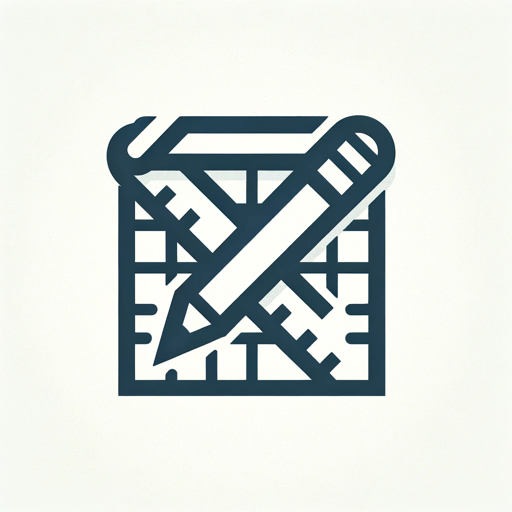Database Designer-AI-powered database design.
AI-powered database design, simplified.
This GPT can provide guidance on database schema design, SQL queries, data normalization, database optimization, and handling various database management systems (DBMS) like MySQL, PostgreSQL, and MongoDB.
"Can you help me design a normalized database schema for an e-commerce application?"
"I'm having trouble with an SQL query for report generation. Can you assist?"
"What are the best practices for securing a database in a web application?"
"How can I improve the performance of my database with large datasets?"
Related Tools

SQL Expert
SQL expert for optimization and queries.

Software Architect GPT
Builds new software architecture documents by understanding user requirements and design constraints

SQL Generator
Advanced SQL assistant and query generator. Write clean SQL queries and become a much faster developer.
SQL+ 🔴VISUALIZE 🔴
🔴VISUALIZE 🔴DATABASES🔴 Design & Optimize SQL queries. Particularly good at SQL.

Class Diagram Creator
I generate class diagrams from software concepts.

Data Warehouse Architect
Architect that specializes in data warehouse design and modeling, as well as the modern data stack (including Snowflake and dbt), ELT data engineering pipelines
20.0 / 5 (200 votes)
Introduction to Database Designer
Database Designer is a specialized tool and service focused on assisting users with the creation, optimization, and management of database schemas. The primary design purpose is to help users structure their data efficiently, ensuring that databases are both scalable and maintainable. The tool is valuable for anyone needing to design databases that are aligned with specific application requirements, whether for a small application or a large enterprise system. For example, a software developer creating a new e-commerce platform might use Database Designer to develop a database schema that supports millions of product records, customer profiles, and transaction logs, all while ensuring fast query performance and data integrity.

Main Functions of Database Designer
Schema Design
Example
Designing a normalized database schema for an online bookstore to handle books, authors, and customer orders.
Scenario
A startup founder plans to launch an online bookstore. Using Database Designer, they can create a relational database schema that includes tables for books, authors, customers, and orders. The tool guides them through the normalization process, ensuring that data redundancy is minimized and relationships between tables are correctly established.
SQL Query Optimization
Example
Optimizing a slow SQL query that retrieves sales reports from a database with millions of records.
Scenario
A business analyst needs to generate weekly sales reports, but the SQL queries used are taking too long to execute. Database Designer assists in identifying inefficient parts of the query and suggests optimizations, such as indexing certain columns or rewriting parts of the SQL statement to use more efficient joins or filters.
Data Normalization Guidance
Example
Helping a team normalize a database that was previously denormalized for quick development.
Scenario
A development team has built a prototype database quickly, leading to a denormalized schema that has redundancy and potential data inconsistency issues. Using Database Designer, they can go through the process of normalizing the database, ensuring that it adheres to the principles of 1NF, 2NF, and 3NF. This helps in reducing redundancy and improving data integrity.
Ideal Users of Database Designer
Software Developers
Software developers benefit from Database Designer by using it to structure and optimize the databases behind their applications. The service helps them ensure that their databases are scalable, perform well under load, and are easy to maintain. Developers who are working on complex applications with extensive data requirements will find the service particularly useful.
Database Administrators (DBAs)
DBAs can use Database Designer to optimize existing databases, enforce best practices, and manage database security and backup strategies. The service is ideal for DBAs who are responsible for the performance and integrity of large, mission-critical databases and need to ensure that these databases are both secure and efficient.

How to Use Database Designer
Visit aichatonline.org for a free trial without login.
You can begin using Database Designer instantly without needing to create an account or subscribe to ChatGPT Plus. This makes it easy to start exploring its features.
Set up your project by defining your database needs.
Identify the purpose of your database, such as whether it will be used for e-commerce, analytics, or application backends. This helps in tailoring the database schema to your specific requirements.
Design your schema using intuitive drag-and-drop tools.
Use the graphical interface to create tables, define relationships, and set constraints. The tool will guide you through best practices, ensuring an optimized and normalized database structure.
Generate SQL scripts or directly export your schema.
Once your design is complete, you can automatically generate the corresponding SQL scripts to implement the database in your preferred environment. Alternatively, export the schema in various formats.
Review and iterate for optimization.
Regularly review your schema for performance improvements and scalability, especially as your project evolves. Use built-in analysis tools to identify and resolve potential issues early.
Try other advanced and practical GPTs
SEO
AI-powered SEO insights for optimal web performance.

SEO
AI-Driven SEO for Enhanced Visibility

中文GPT4.0
AI-powered tool for Chinese language mastery

中文代码助手
AI-driven assistance for code and language

图片生成器
Create images effortlessly with AI

数据分析师
AI-Driven Insights for Smarter Decisions

SQL Database Architect
AI-driven SQL database design assistant.

Database Management Systems
AI-powered Database Management.

Ultimate X (Twitter) Content Creator
Empower your tweets with AI-driven content.

Social Media
AI-powered social media made simple

Bible
AI-powered biblical insights for everyone.

Yippy - UEFN Verse FortniteCreative helper
AI-powered Verse code helper for UEFN.

- Optimization
- Collaboration
- Schema Design
- Normalization
- SQL Scripting
Database Designer Q&A
What is the main purpose of Database Designer?
Database Designer helps users create efficient, scalable database schemas with minimal effort. It offers an intuitive interface for defining tables, relationships, and constraints, while also providing best practices for optimization and normalization.
Can I use Database Designer for both SQL and NoSQL databases?
Yes, Database Designer supports the design of both SQL and NoSQL databases. It allows you to define schemas for various database types, ensuring flexibility in how you structure your data.
Does Database Designer provide guidance on database normalization?
Absolutely. Database Designer includes tools and suggestions for normalization, helping you eliminate redundancy and ensure the integrity of your database structure, which is crucial for long-term performance and scalability.
Can I collaborate with others using Database Designer?
Yes, Database Designer supports collaborative features, allowing multiple users to work on the same project simultaneously. This is particularly useful for teams working on large-scale database projects.
Is there an option to integrate with existing databases?
Database Designer offers integration options to connect with and modify existing databases. You can import current schemas, make necessary changes, and then export or apply those changes directly.